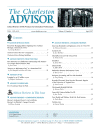
Benchmark Library Metrics and Trends
Per the vendor, Benchmark: Library Metrics and Trends “provides libraries with data visualizations that facilitate comparisons with customized peer groups, Carnegie classes, and nationwide data.” Navigating this database can be somewhat difficult, as it has no starting point
that will be obvious to the user. It takes some time to click on the various tabs and determine what functionality is available and how to use it. Therefore, a new user might benefit from instruction in the use of this database from either the vendor or someone else familiar with it. Despite
these complexities, this resource offers its users a broad and varied range of data on the institutions covered therein. This includes total expenditures, circulation, information services, FTE staff, collections institutional repositories, Interlibrary Loan, group presentations, hours opens
per week, weeks effected by COVID 19, student enrollment, gate-count, and materials and operations expenditures. The last of these includes total salary expenditures for all FTE librarians and other paid staff, as well as student assistants, but doesn't include salary information for specific
positions.
There are two levels of access to this database, the first of which is free! It allows academic libraries to view and complete open ACRL surveys and see their responses to previous surveys, among other things. The second level of access is via subscription. It gives libraries access to all of the free features, plus a custom report builder, interactive data dashboards, and the means to generate custom peer groups. The cost of the subscription portion of this database depends on whether the library subscribing is an academic or company/corporate one, and/or is part of a consortia. There are also discounts available for ACRL members and libraries that have participated in the database's 2020 survey. Consequently, the subscription price can range from an annual cost of $3,000 (for consortia) to $428 (for academic libraries taking advantage of all available discounts). Overall, most libraries will find this pricing quite reasonable. However, it's advisable that potential subscribers contact the vendor for a price quote specific to their institution. The licensing agreement for this database isn't particularly long and is in many ways average in its composition, so it presents little reason for concern.
There are two levels of access to this database, the first of which is free! It allows academic libraries to view and complete open ACRL surveys and see their responses to previous surveys, among other things. The second level of access is via subscription. It gives libraries access to all of the free features, plus a custom report builder, interactive data dashboards, and the means to generate custom peer groups. The cost of the subscription portion of this database depends on whether the library subscribing is an academic or company/corporate one, and/or is part of a consortia. There are also discounts available for ACRL members and libraries that have participated in the database's 2020 survey. Consequently, the subscription price can range from an annual cost of $3,000 (for consortia) to $428 (for academic libraries taking advantage of all available discounts). Overall, most libraries will find this pricing quite reasonable. However, it's advisable that potential subscribers contact the vendor for a price quote specific to their institution. The licensing agreement for this database isn't particularly long and is in many ways average in its composition, so it presents little reason for concern.
Publication date: 01 April 2022
- Access Key
- Free content
- Partial Free content
- New content
- Open access content
- Partial Open access content
- Subscribed content
- Partial Subscribed content
- Free trial content
